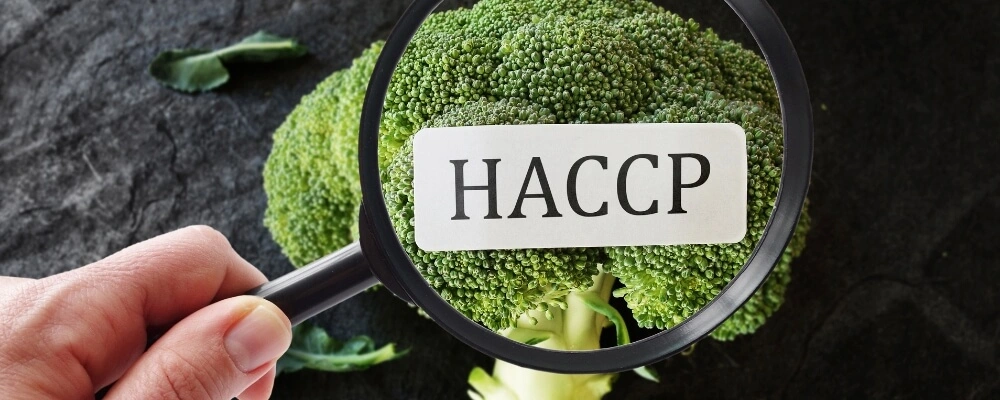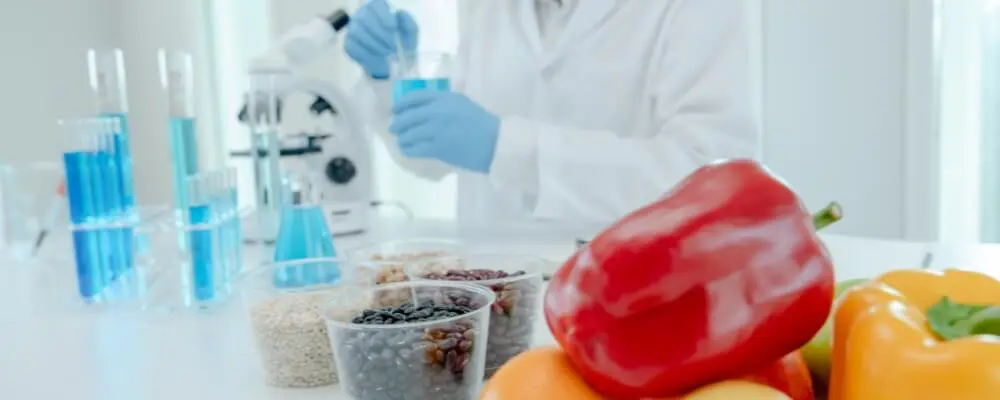In the vast and intricate world of food safety, few terms resonate as strongly as “HACCP.” But what exactly is HACCP? An acronym often appearing in food production handbooks, regulatory documents, and industry conferences, HACCP stands as a beacon for ensuring that the food on our plates is not just delicious but safe to consume.
Dive deep with us as we demystify HACCP, exploring its definition, its profound meaning in the food industry, the meticulous process that underpins it, and the core principles that guide its implementation. Whether you’re a seasoned food industry professional or a curious consumer, this comprehensive guide will offer a clear and detailed insight into one of the most significant systems safeguarding our food supply. Welcome to the world of HACCP, where safety meets science in pursuing culinary excellence.
What is HACCP? Definition and Meanings
Hazard Analysis Critical Control Points (HACCP) is a globally recognized food safety management system that identifies and controls potential hazards during food production. This system addresses biological, chemical, and physical risks from the initial stages of raw material production and procurement up to the distribution and consumption of the finished product. By analyzing where these hazards may arise, HACCP establishes measures to minimize these risks, ensuring food products’ safe production and delivery.
To enhance its effectiveness, HACCP operates in tandem with essential prerequisite programs like pest control, hygiene, sanitation, traceability, and recall mechanisms. The ultimate aim of HACCP is to prevent or substantially reduce the occurrence of food safety hazards rooted in applying scientific principles to food processing and production. This ensures that food products are not only compliant with regulatory standards but are also safe for consumers.

Importance Of HACCP
Hazard Analysis Critical Control Points (HACCP) plays a pivotal role in ensuring food safety worldwide, and its importance can be distilled into the following points:
- Consumer Safety: At its core, HACCP is designed to protect consumers from foodborne illnesses and contaminants, ensuring their food is safe.
- Prevention Over Correction: Instead of relying on end-product testing, HACCP emphasizes preventing hazards at specific points in the production process. This proactive approach reduces the chance of unsafe food reaching consumers.
- Systematic Approach: By identifying potential hazards and implementing critical control points, HACCP offers a structured method for addressing food safety, ensuring no step is overlooked.
- Economic Benefits: Recalls, legal actions, and medical treatments resulting from foodborne illnesses can be costly. Businesses can avoid these expenses and potential reputational damage by reducing the risk of contamination.
- Compliance and Trade: Many international markets require HACCP certification as a condition for trade. Implementing HACCP can open up global market opportunities for food producers.
- Streamlined Processes: HACCP can lead to more efficient production processes. Businesses can reduce waste and improve productivity by understanding and monitoring critical control points.
- Foundation for Other Standards: HACCP often serves as a foundation for other food safety standards and certifications, making it easier for businesses to achieve additional certifications if they already have HACCP.
- Boosts Consumer Confidence: Knowledge that a business adheres to HACCP standards can enhance consumer trust in the brand and its products.
- Continuous Improvement: The regular reviews and updates that the HACCP system mandates ensure that food safety management processes are always current and evolving as technologies and risks change.
- Holistic View of Safety: HACCP considers a wide range of hazards, from biological to chemical and physical, ensuring a comprehensive approach to food safety.
In essence, the importance of HACCP extends beyond mere regulatory compliance; it’s a vital tool for ensuring the well-being of consumers, the reputation and economic stability of food businesses, and the overall integrity of the global food supply chain.

7 Key Principles Of HACCP (Hazard Analysis and Critical Control Points)
At the heart of the HACCP system are its seven principles. Each principle builds upon the previous ones to create a robust framework for food safety management.
Principle 1: Conduct a Hazard Analysis
Identify and evaluate potential food safety hazards.
Steps:
- List All Process Steps: Document each stage of the food production process, from receiving raw materials to distribution.
- Identify Potential Hazards: Determine biological (e.g., bacteria, viruses), chemical (e.g., pesticides, allergens), and physical (e.g., glass shards, metal fragments) hazards at each step.
- Evaluate Severity and Likelihood: Assess the potential impact of each hazard on consumer health and the probability of its occurrence.
- Determine Control Measures: Identify preventive measures to eliminate or reduce hazards to acceptable levels.
Example: In a poultry processing plant, a potential hazard could be Salmonella contamination during processing. The severity is high due to the risk of severe illness, and the likelihood is moderate if proper sanitation is maintained.
Principle 2: Determine Critical Control Points (CCPs)
Identify points in the process where control is essential to prevent or eliminate hazards.
Steps:
- Use a CCP Decision Tree: Apply a systematic approach to determine if a process step is a CCP.
- Assess Each Process Step: Evaluate whether control at a particular step can prevent, eliminate, or reduce a hazard to safe levels.
- Identify Multiple CCPs if Necessary: Some hazards may require control at multiple points.
Example: Cooking poultry to an internal temperature of 165°F (74°C) is a CCP, as it effectively kills Salmonella bacteria.
Principle 3: Establish Critical Limits
Define the maximum or minimum thresholds for each CCP to ensure safety.
Steps:
- Set Measurable Criteria: Establish specific values (e.g., temperature, pH, time) based on scientific data and regulatory standards.
- Ensure Feasibility: Critical limits must be achievable and maintainable within the production process.
- Document Rationale: Provide justification for each critical limit based on scientific literature or regulatory guidelines.
Example: The critical limit for cooking beef burgers might be set at a minimum internal temperature of 155°F (68°C) for a specified time to ensure pathogen elimination.
Principle 4: Establish Monitoring Procedures
Develop methods to track the control of each CCP.
Steps:
- Define What to Monitor: Identify parameters such as temperature, time, pH, or humidity.
- Determine Monitoring Methods: Specify the tools and techniques used for measurement (e.g., thermometers, pH meters).
- Set Monitoring Frequency: Establish how often monitoring should occur (e.g., per batch, hourly).
- Assign Responsibility: Designate personnel responsible for monitoring activities.
- Record Results: Maintain logs or records of monitoring data for verification purposes.
Example: Regularly checking the internal temperature of cooked poultry with a calibrated thermometer ensures that the critical limit is consistently met.
Principle 5: Establish Corrective Actions
Define procedures to address deviations from critical limits.
Steps:
- Identify Deviation Triggers: Determine what constitutes a breach of critical limits.
- Outline Immediate Actions: Specify steps to regain control, such as adjusting equipment settings.
- Manage Affected Products: Decide whether to reprocess, discard, or segregate products that did not meet standards.
- Investigate Root Causes: Analyze why the deviation occurred to prevent recurrence.
- Document Actions: Keep detailed records of deviations and corrective measures taken.
Example: If a batch of cooked poultry fails to reach 165°F, the corrective action may involve further cooking or discarding the batch to prevent unsafe products from reaching consumers.
Principle 6: Establish Verification Procedures
Ensure that the HACCP system is functioning as intended.
Steps:
- Conduct Regular Audits: Perform internal and external reviews of HACCP procedures and records.
- Validate Control Measures: Confirm that critical limits effectively control hazards through testing and scientific evidence.
- Review Monitoring and Corrective Actions: Assess the accuracy and effectiveness of monitoring data and corrective actions.
- Reassess Hazard Analyses: Update hazard analyses as processes or regulations change.
- Calibrate Equipment: Ensure that measurement tools are accurate and functioning correctly.
Example: Periodically auditing temperature logs and conducting microbial testing on products can verify that cooking processes are effectively eliminating pathogens.
Principle 7: Establish Record-Keeping and Documentation Procedures
Maintain comprehensive records to demonstrate compliance and facilitate traceability.
Steps:
- Document All HACCP Elements: Include hazard analyses, CCP determinations, critical limits, monitoring procedures, corrective actions, and verification activities.
- Maintain Monitoring Records: Keep logs of all monitoring activities, including dates, times, and results.
- Store Corrective Action Records: Detail deviations and the steps taken to address them.
- Archive Verification Reports: Save audit findings, validation studies, and calibration records.
- Ensure Accessibility: Make records easily retrievable for inspections, audits, and traceability needs.
Example: Keeping detailed temperature logs for each cooking batch allows for quick identification and response if a deviation occurs, ensuring traceability and accountability.

Effective Process For Implementing HACCP Principles
Implementing the HACCP principles effectively requires a structured and comprehensive approach. Here’s a step-by-step process to ensure that each of the HACCP principles is executed effectively:
1. Formation of a Multidisciplinary HACCP Team
Gathering experts from various fields is pivotal to fully grasp the intricacies of any food production process. A broader perspective is attained by integrating knowledge from disciplines like microbiology, quality assurance, production, and engineering. This multidisciplinary approach not only ensures a thorough understanding of each production stage but also aids in pinpointing potential hazards with more accuracy.
2. Describe the Product and Intended Use
Before diving into hazard analysis, it’s crucial to have a detailed understanding of the product. This encompasses everything from its ingredients and how it’s processed to its storage conditions and the target consumer demographic. With this information, the HACCP team can tailor their analysis to the product’s unique characteristics, ensuring that potential risks are aligned with real-world scenarios.
3. Develop a Flow Diagram of the Production Process
Constructing a flow diagram is akin to mapping out a journey. By visually representing each production stage, it becomes easier to pinpoint areas where risks might emerge. This diagram acts as a reference guide, simplifying the complex journey of food from raw materials to finished products.
4. On-site Confirmation of Flow Diagram
Theory and practice often diverge, making validating the constructed flow diagram against the real-world production process essential. By walking through each step physically, discrepancies between the theoretical model and actual operations can be identified and rectified, ensuring that the HACCP plan is firmly grounded in reality.
5. Conduct a Thorough Hazard Analysis (Principle 1)
The heart of HACCP lies in hazard analysis. Potential biological, chemical, or physical threats can be identified by meticulously examining each production step. It’s not just about spotting these hazards but also evaluating their severity and the likelihood of their occurrence. This dual-focused approach ensures that efforts are directed toward the most pressing threats.

6. Determine the Critical Control Points (Principle 2)
Following hazard identification, the next step is recognizing the stages where these hazards can be controlled. By employing tools like the CCP decision tree, the team can systematically identify points in the process where interventions will have the most significant impact on ensuring food safety.
7. Establish Critical Limits for Each CCP (Principle 3)
Control is not effective without quantifiable parameters. For each CCP, there are clear criteria, such as specific temperatures or pH levels, which must be maintained to mitigate the associated risks. These critical limits are backed by scientific data and industry standards, acting as the benchmarks for safety.
8. Develop Monitoring Procedures (Principle 4)
Monitoring ensures that critical limits are consistently adhered to. This involves defining specific protocols: who will check, how often these checks will occur, the tools used, and the metrics gathered. Regular monitoring acts as the frontline defense in the HACCP system, catching deviations before they escalate into more significant issues.
9. Define Corrective Actions (Principle 5)
Despite best efforts, deviations from the plan can occur. In such cases, a predetermined set of corrective actions provides a roadmap to address these deviations promptly. This involves rectifying the immediate issue and entails a longer-term strategy to prevent its recurrence.
10. Establish Verification Procedures (Principle 6)
Verification is checking that the HACCP system is operating as intended. This might involve a review of monitoring records, recalibrating instruments, or even periodic testing of the end product. These activities collectively ensure that the HACCP system’s integrity remains uncompromised.

11. Implement Record-keeping and Documentation Systems (Principle 7)
Documenting the HACCP journey is essential for both compliance and continuous improvement. Detailed records offer a snapshot of the system’s functioning at any given time, from initial hazard analysis to corrective actions taken. This archival process ensures a paper trail for every decision and action, fostering transparency and accountability.
12. Review and Update the HACCP Plan Regularly
Like any effective system, HACCP is dynamic. Regular reviews ensure that the plan evolves alongside changes in production processes, ingredient sources, or even new scientific findings. These periodic assessments guarantee that the HACCP system remains robust, relevant, and effective in safeguarding food safety.
13. Train and Educate Staff
The HACCP system is only as strong as the people implementing it. Regular training sessions ensure everyone understands their role within the HACCP framework, from top-tier management to floor staff. Businesses foster a culture of safety and vigilance by instilling the importance of food safety and keeping everyone updated on best practices.
By meticulously following this structured process and prioritizing continual learning, businesses position themselves to produce safe food products, minimizing the risk of foodborne illnesses and earning the trust of consumers and regulators alike.
Conclusion
In the realm of food safety, understanding HACCP is paramount. As we’ve journeyed through its intricacies, it becomes evident that HACCP is not merely an acronym or a set of regulations. It symbolizes the dedication of the food industry to prioritize safety, marrying scientific precision with practical implementation. From its foundational definition to its encompassing process and steadfast principles, HACCP acts as a vigilant guardian, ensuring that each morsel we consume meets rigorous safety standards.
The appreciation of HACCP transcends the confines of factories and labs, reaching into every kitchen and dining table worldwide. As consumers, knowing about HACCP is not just about understanding a process; it’s about recognizing and valuing the immense efforts to guarantee that our meals are not just tasty but safe and wholesome. In the dance of culinary artistry and science, HACCP takes center stage, reminding us that every delicious bite is a testament to an industry’s unwavering commitment to safety.

